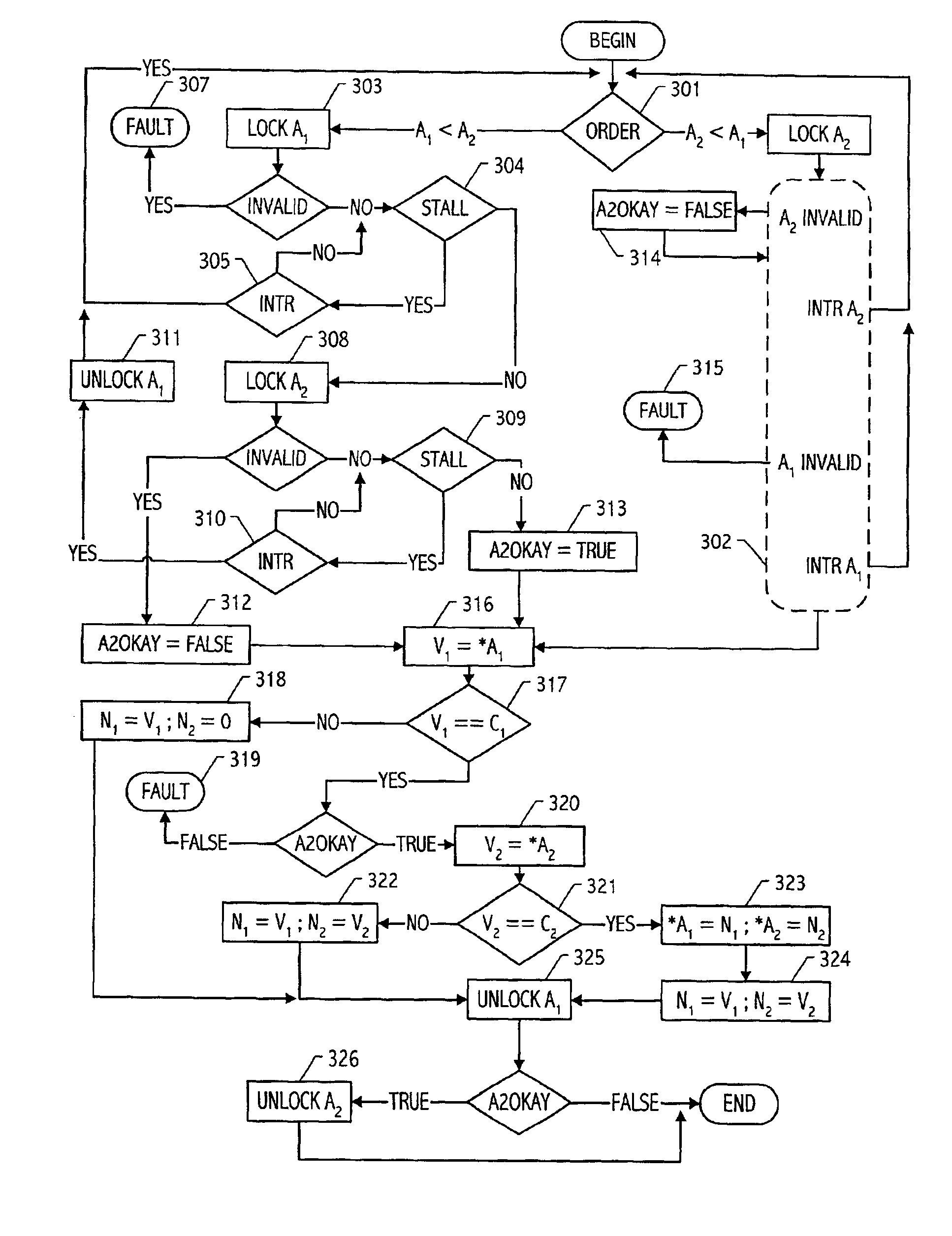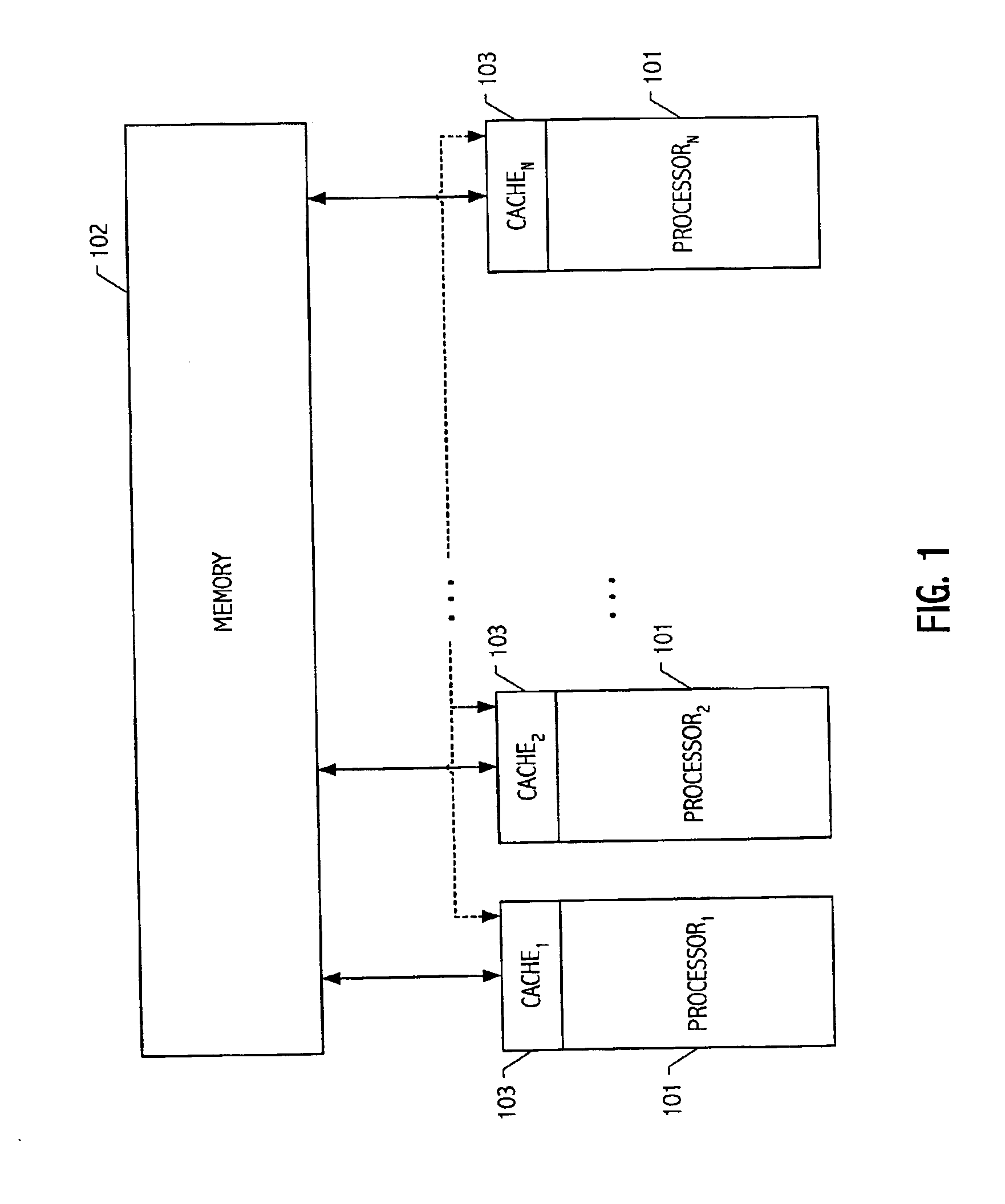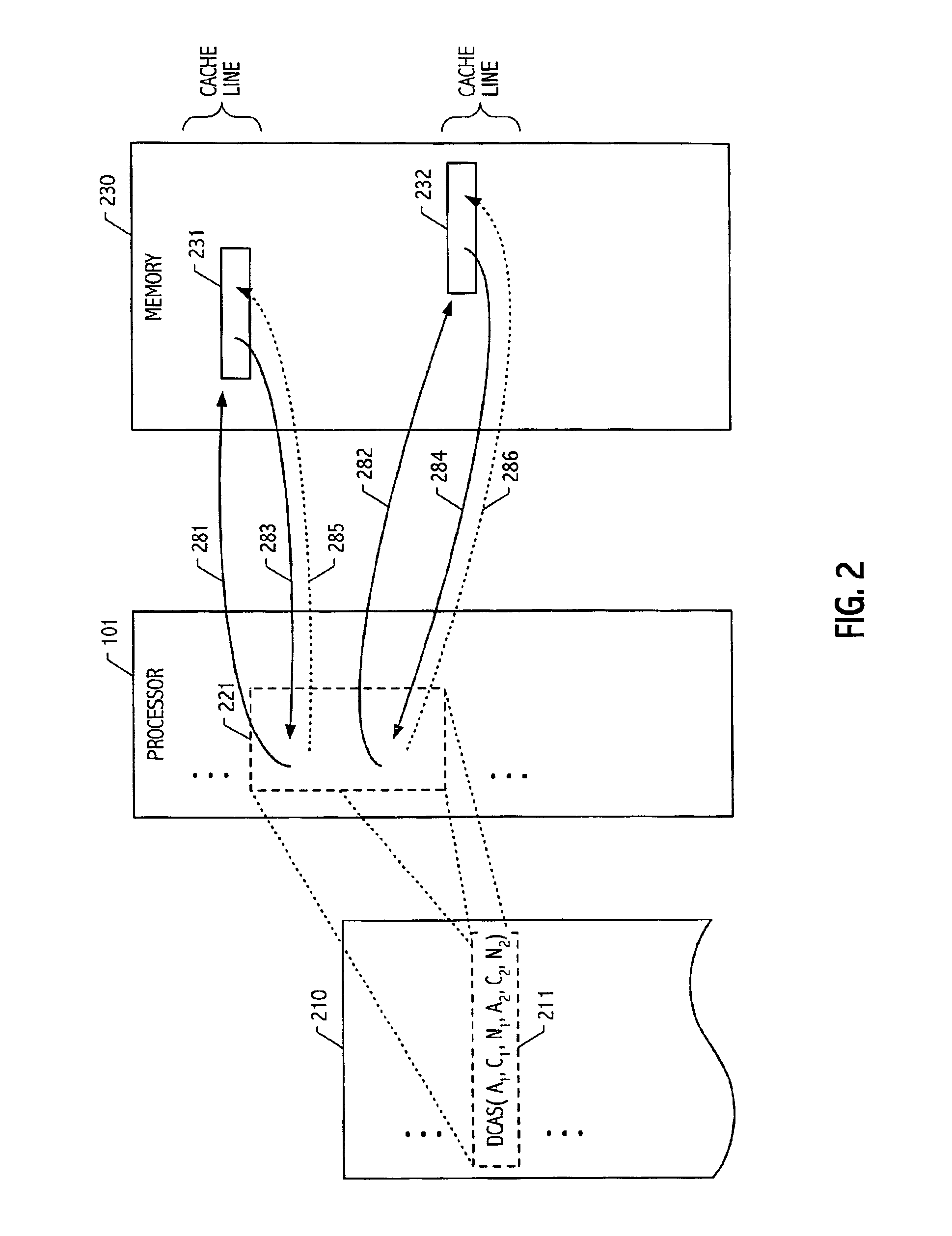Selective signal of fault in compound compare-and-swap
a compare-and-swap and selective signal technology, applied in the direction of unauthorized memory use protection, multi-programming arrangement, instruments, etc., can solve the problems of inability to provide dcas instruction, interrupt or trap, and inability to execute so as to avoid the deadlock between concurrently executed instances of sequentially performed ncas instructions
- Summary
- Abstract
- Description
- Claims
- Application Information
AI Technical Summary
Benefits of technology
Problems solved by technology
Method used
Image
Examples
Embodiment Construction
e compare-and-swap instruction in accordance with some realizations of the present invention.
[0020]FIG. 3 depicts a flow chart of operations in accordance with an exemplary implementation of a sequentially performed double compare-and-swap instruction in accordance with some realizations of the present invention.
[0021]The use of the same reference symbols in different drawings indicates similar or identical items.
DESCRIPTION OF THE PREFERRED EMBODIMENT(S)
[0022]FIG. 1 depicts an exemplary cache-coherent shared memory multiprocessor configuration. Plural processors 101 share a memory space 102. Each processor 101 implements a sequentially performed compound synchronization operation, such as a sequentially performed double compare-and-swap (DCAS) or compound compare-and-swap operation (nCAS), in accordance with the present invention. While a variety of sequentially performed compound synchronization operation implementations are envisioned, the description that follows focuses on an e...
PUM
 Login to View More
Login to View More Abstract
Description
Claims
Application Information
 Login to View More
Login to View More - R&D
- Intellectual Property
- Life Sciences
- Materials
- Tech Scout
- Unparalleled Data Quality
- Higher Quality Content
- 60% Fewer Hallucinations
Browse by: Latest US Patents, China's latest patents, Technical Efficacy Thesaurus, Application Domain, Technology Topic, Popular Technical Reports.
© 2025 PatSnap. All rights reserved.Legal|Privacy policy|Modern Slavery Act Transparency Statement|Sitemap|About US| Contact US: help@patsnap.com



